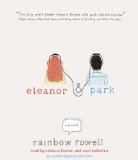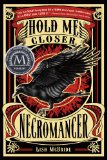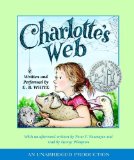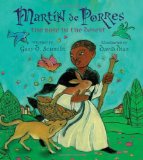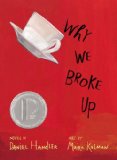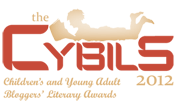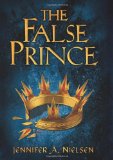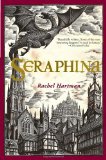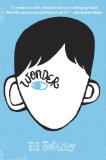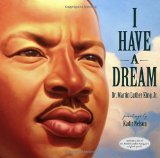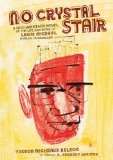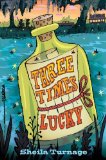Review of Eleanor & Park, by Rainbow Rowell
by Rainbow Rowell
read by Rebecca Lowman and Sunil Malhotra
Listening Library, 2013. 9 hours on 7 compact discs.
Starred Review
2013 Boston Globe-Horn Book Award Winner
Sigh. I didn’t want this book to end. I hated going to work today, having to stop in the middle of the last CD. When I got home, I didn’t even think for a moment of leaving the CD in the car. (And I’d done the same thing on CD 5, finishing it in the house.)
I’ve always liked slow-burn romance, romance that shows the characters, slowly, realistically, falling in love over time, rather than just looking at someone and suddenly falling for them. This book is a realistic, slow, beautiful, exquisite love story.
I loved listening to the story. I liked the way you’d hear what one character was thinking, and then it would jump to the other character’s viewpoint. However, now that I’m writing the review, I wish I had the print book to share good bits with you.
I did *not* like the ending. However, considering that the Eleanor & Park were studying Romeo & Juliet in school (Eleanor being contemptuous that it’s called tragedy), and considering the parallel nature of the title, and that this was also a teenage love story between teens from very different backgrounds — well, it could have ended much worse. I was afraid all along this would end as badly as Romeo & Juliet. This isn’t too big a spoiler: Nobody dies.
But I hated the ambiguity of the very end. And there are many secondary characters whose fates I really want to know about. The author gave us so much detail along the way, is it too much to ask for a little bit of detail at the end? (Apparently it is.) I want to know more!
So you’ve been warned about the ending. But the journey is totally worth it. It starts toward the beginning of the school year when a new girl — Eleanor — gets on the school bus, and no one will let her have a seat. Park finally scoots over and gives her half of his seat, but they don’t even speak to one another for weeks. The back-and-forth narration shows us each one starting to wonder about the silent person on the bus. Then Eleanor starts reading Park’s comics over his shoulder. They still don’t speak.
Meanwhile Eleanor’s dealing with bullying in gym class and an awful situation at home, with four little brothers and sisters to worry about as well. Park’s problems are more along the lines of his Dad making him learn to drive a stick before he’ll let him get his license. As things progress, Eleanor cannot let her family find out about Park.
There were so many little things that rang so true. I liked the way neither would admit they were boyfriend and girlfriend until well after Park had gotten in a fight over something said to Eleanor.
The audio was wonderful and had me driving to and from work almost in a trance. It’s not family listening, though. It’s a love story, and their feelings do grow in passion, which could be quite embarrassing for younger listeners. (I love the way they each marvel separately over how amazing it feels to hold hands. Things do progress from there, but this doesn’t jump straight to making out without giving the small steps along the way their due.) I was listening in the car by myself, so I didn’t have to worry about embarrassment, but the descriptions struck just the right note of wonder and passion, without feeling trite.
If you’re ever in the mood for a love story, I highly recommend this one.
Find this review on Sonderbooks at: www.sonderbooks.com/Teens/eleanor_and_park.html
Disclosure: I am an Amazon Affiliate, and will earn a small percentage if you order a book on Amazon after clicking through from my site.
Source: This review is based on a library book from Fairfax County Public Library.
Disclaimer: I am a professional librarian, but I maintain my website and blogs on my own time. The views expressed are solely my own, and in no way represent the official views of my employer or of any committee or group of which I am part.
Please use the comments if you’ve read the book and want to discuss spoilers!
